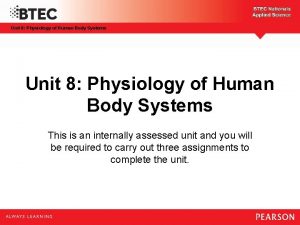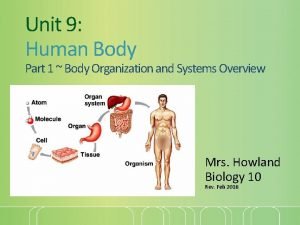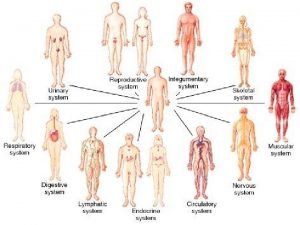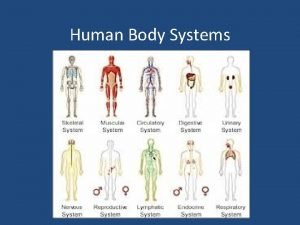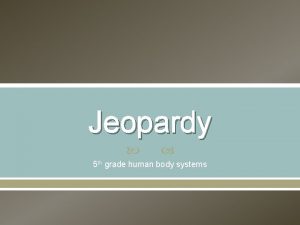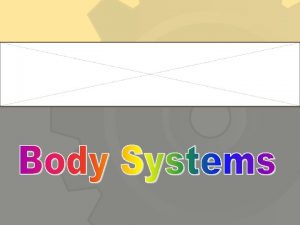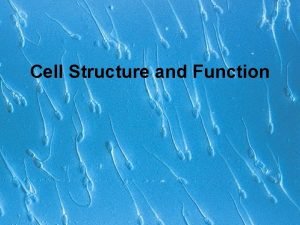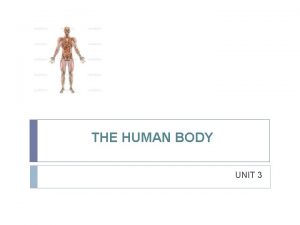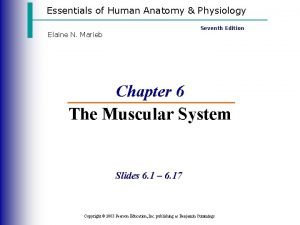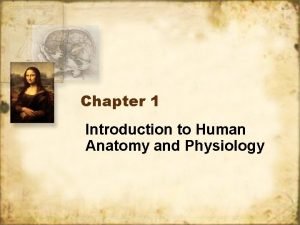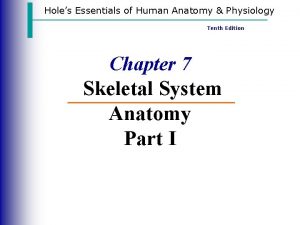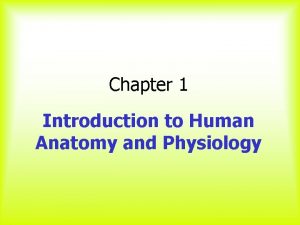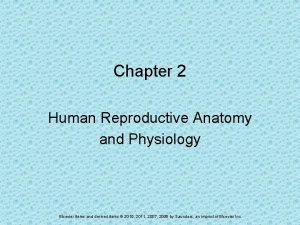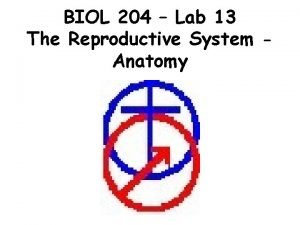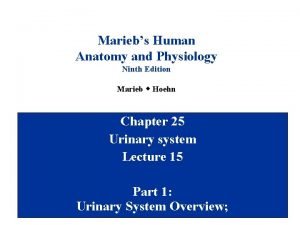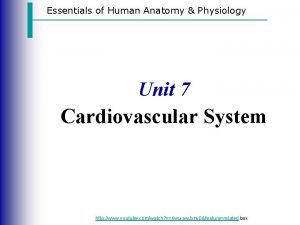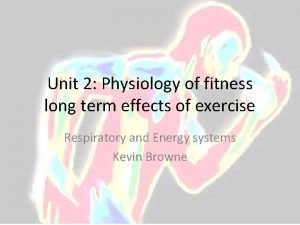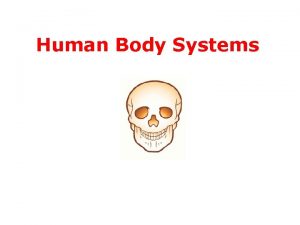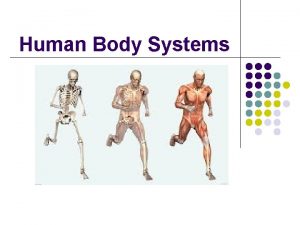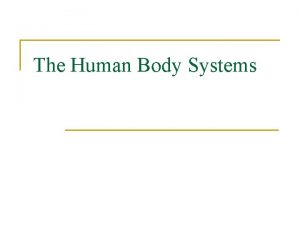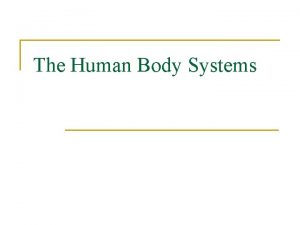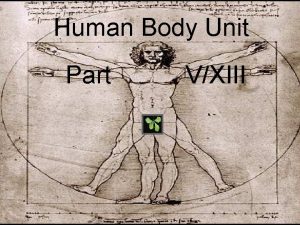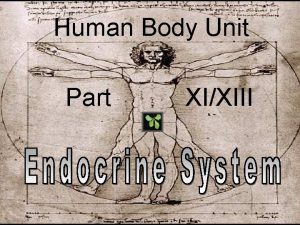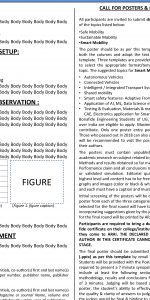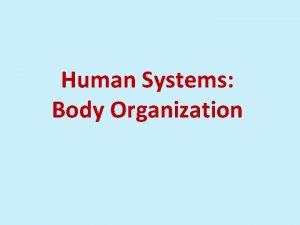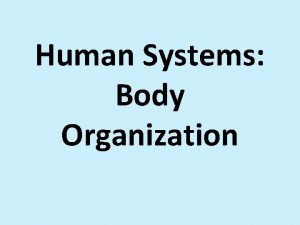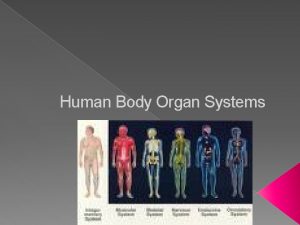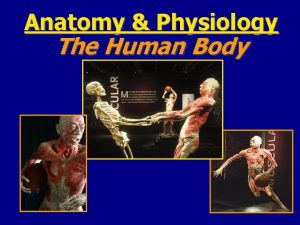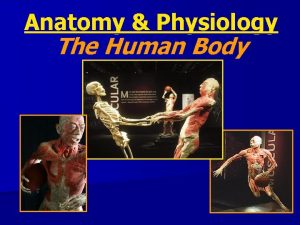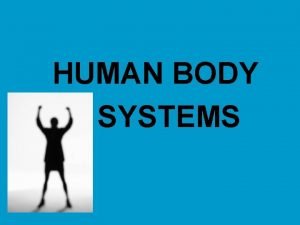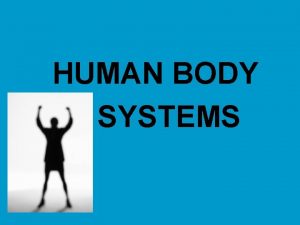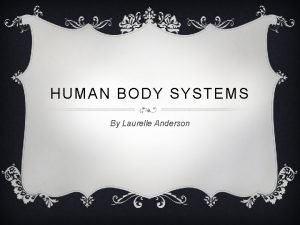Unit 8 Physiology of Human Body Systems This

Unit 8: Physiology of Human Body Systems This is an internally assessed unit and you will be required to carry out three assignments to complete the unit.

Unit 8: Physiology of Human Body Systems In this unit you will learn about the physiology of three human body systems: • Musculoskeletal • Lymphatic • Digestive You need to develop your knowledge and understanding of the three systems, the implications when they are not working properly and the corrective treatments that are available. Lesson 8 B 1

Unit 8: Physiology of Human Body Systems Lesson 8 B. 1 Structure and function of the Lymphatic system

Unit 8: Physiology of Human Body Systems Learning Aim B Understand the impact of disorder on the physiology of the lymphatic system and the associated corrective treatment Task 1: Please take a few minutes to complete the prior learning Activity sheet 8. 6 for the unit. . Up load on class charts and email to Mrs Smith as part of lesson 8 B. 1. by the deadline set Lesson 8 B 1

Unit 8: Physiology of Human Body Systems Pupil task 1: Please take a few minutes to complete the prior learning sheet (Activity sheet 8. 6 for the unit) Up load on class charts and email to Mrs Smith as part of lesson 8 B 1. Lesson 8 B 1

Unit 8: Physiology of Human Body Systems For this learning aim you need to: Investigate the composition and locate the component parts of the lymphatic system: • Spleen, thymus, tonsils, lymph gland, vessels, valves, lymph nodes. Understand the three main functions and normal working of the lymphatic system: • Return of interstitial fluid/hydrostatic pressure • defence against disease • absorption of fats from digestive system Understand the impact of dysfunction of the system and associated treatments. Lesson 8 B 1

7 L e v e l 3 N a t i o n a l s U n i t Unit 8: Physiology of Human Body Systems Lymphedema, lymphadenitis and Hodgkin’s lymphoma Pupil task: Can you recognise the parts listed? 8 P h y s i o l o g y o f H u m a n B o d Do you know anything about their functions already? Pupil Task 2: : Research and find some photos of lymphedema, lymphadenitis and Hodgkin’s lymphoma. Insert your images into the table then complete questions linked to your research. What has caused these problems and why? Where does lymph come from? What must happen to it? Why? Up load on class charts and email to Mrs Smith as part of lesson 8 b. 1 by the deadline set The positions of the lymphatic organs Lesson 8 B 1

8 L e v e l 3 N a t i o n a l s U n i t 8 P h y s i o l o g y o f H u m a n B o d Unit 8: Physiology of Human Body Systems The positions of the lymphatic organs Pupil Task 3: : Research and label a diagram of your own (make/ acquire a blank diagram of a lymphatic system model off the internet and produce your own worksheet. Label the parts named below spleen thymus tonsils lymph gland vessels valves nodes Lymph nodes: axillary abdominal inguinal popliteal supratrochlear Annotate it to describe/discuss the positions of the lymphatic organs. YOU MUST PRODUCE YOUR OWN Up load on class charts and email to Mrs Smith as part of lesson 8 b. 1 by the deadline set Lesson 8 B 1

Unit 8: Physiology of Human Body Systems Structures of the lymphatic system to be described: • • spleen thymus tonsils lymph gland vessels valves nodes Lymph nodes: • axillary • abdominal • inguinal • popliteal • supratrochlear Lesson 8 B 1

Unit 8: Physiology of Human Body Systems Blood pressure is measured by a sphygmomanometer Read independently then complete task 4 Throughout the cardiac cycle, the blood pressure increases and decreases: § systolic pressure is the pressure at which the blood leaves the heart in the aorta. § diastolic pressure is the minimum pressure in the arteries. It reflects the resistance of the small arteries and capillaries to the flow of blood. Measuring blood pressure Lesson 8 B 1 The liquid forced out of blood capilleries forms interstitial fluid which bathes cells. This forms lymph.

Unit 8: Physiology of Human Body Systems Blood pressure is measured by a sphygmomanometer Reading independently Task 4: Now answer these questions 1. How is blood circulated round the body? 2. Why do we have a circulatory system? 3. How does tissue fluid escape from capillaries? 4. Why does it need to escape? continues Questions 5 & 6 on the next slide Measuring blood pressure Lesson 8 B 1

Unit 8: Physiology of Human Body Systems How a lymph is formed 3. How is lymph formed? 4. What happens to the tissue fluid? Up load all answers 1 – 6 on class charts and email to Mrs Smith as part of lesson 8 b. 1 by the deadline set Lesson 8 B 1

Unit 8: Physiology of Human Body Systems In support of task 5 What role does each of the parts of the lymphatic system play in defending the body against disease? The lymphatic system Lesson 8 B 1

Unit 8: Physiology of Human Body Systems How the products of digestion are absorbed in the ileum Lesson 8 B 1 In support of task 5

Unit 8: Physiology of Human Body Systems Summary then Task 5 The main functions of the lymphatic system: § returns interstitial fluid § defence against disease (formation and transport of lymphocytes) Lesson 8 B 1 § maintenance of hydrostatic pressure § absorption of fats from digestive system. Pupil task 5: Research and make notes to explain the normal functioning of the lymphatic system. The main focus should be on the return of interstitial fluid – normal functioning. Roughly half a page on each function Up load on class charts and email to Mrs Smith as part of lesson 8 B 1.

Unit 8: Physiology of Human Body Systems Lesson 8 B. 2 Importance of normal healthy working of the lymphatic system

Unit 8: Physiology of Human Body Systems Building on lesson 8 b 1 (slides 11 -14) Key questions you should be able to recap and answer with confidence by now Pupil task 6: 1. Why it is important to have lymph glands and nodes? . 2. What is the defence function of the lymphatic system? 3. What is the role of bone marrow and lymphocytes. Pupil task 7: Research microscope images of prepared slides of spleen, thymus gland tonsils, to reinforce the composition of these structures of the lymphatic system. Produce a one sided page of A 4 evidence of your images with clear references of the secondary sources used. Up load on class charts and email to Mrs Smith as part of lesson 8 B 2. Lesson 8 B 2

Unit 8: Physiology of Human Body Systems Lesson 8 B. 3 8. B 3 Abnormal functioning of the lymphatic system

Unit 8: Physiology of Human Body Systems Abnormal functioning of the lymphatic include the following examples: • Lymphadenitis • Lymphedema • Hodgkin’s lymphoma Types of treatment • medication • medical intervention/surgery • alternative therapies • adaptation to disorder/dysfunction • lifestyle changes • short-/long-term effect on individual. Pupil task 8: Select one card from the activity sheet 8. 7 lymphatic system dysfunction cards. Prepare a short presentation /leaflet on Issues to be considered and their abnormal functions: . Up load on class charts and email to Mrs Smith as part of lesson 8 B 3. Lesson 8 B 3

Unit 8: Physiology of Human Body Systems Learning Aim B vocabulary appendix bone marrow lymphatic fluid lymphatic system hydrostatic pressure interstitial fluid lacteals lymph capillaries lymph ducts lymph nodes lymphocyte macrophages lymph vessels lymphadenitis lymphatic duct oedema spleen thoracic duct thymus tonsils valves Lesson 8 B 3

Unit 8: Physiology of Human Body Systems Literacy research the key word definitions Pupil task 9: Research and complete the key word definition activity sheet 8. 8 Up load on class charts and email to Mrs Smith as part of lesson 8 B 3. Lesson 8 B 3

Unit 8: Physiology of Human Body Systems Lesson 8 B. 4 Disorders of the lymphatic system

Unit 8: Physiology of Human Body Systems What should Mind Maps look like? § A diagram used to organise information, such as a topic to revise § The diagram shows links between ideas § Organise your revision notes – all key points for that topic are on 1 page § Get a friend or parent to test you on key concepts

Unit 8: Physiology of Human Body Systems Model of a science topic mind map

Unit 8: Physiology of Human Body Systems This lesson TASK 10 1. Construct a mind map/concept map of the lymphatic system some disorders. 2. Practice and learn the key words format the previous lesson and get someone to test you. ASSESSMENT PREPARATION TO FOLLOW Key command words used in learning aim B (describe, explain, evaluate) Up load on class charts and email to Mrs Smith as part of lesson 8 B 3.

Unit 8: Physiology of Human Body Systems Assessment At the end of the teaching and learning phase, following the tasks provided in the assignment brief, you will now be assessed on your ability to describe, explain and evaluate: • The structure and function of the lymphatic system • Health matters and treatments related to the lymphatic system. When producing evidence for assessment, you must work independently and produce valid and authentic work to submit by the hand-in date. You can refer to notes and materials from lessons when producing your evidence. You must give references for source materials you have used.
- Slides: 26
